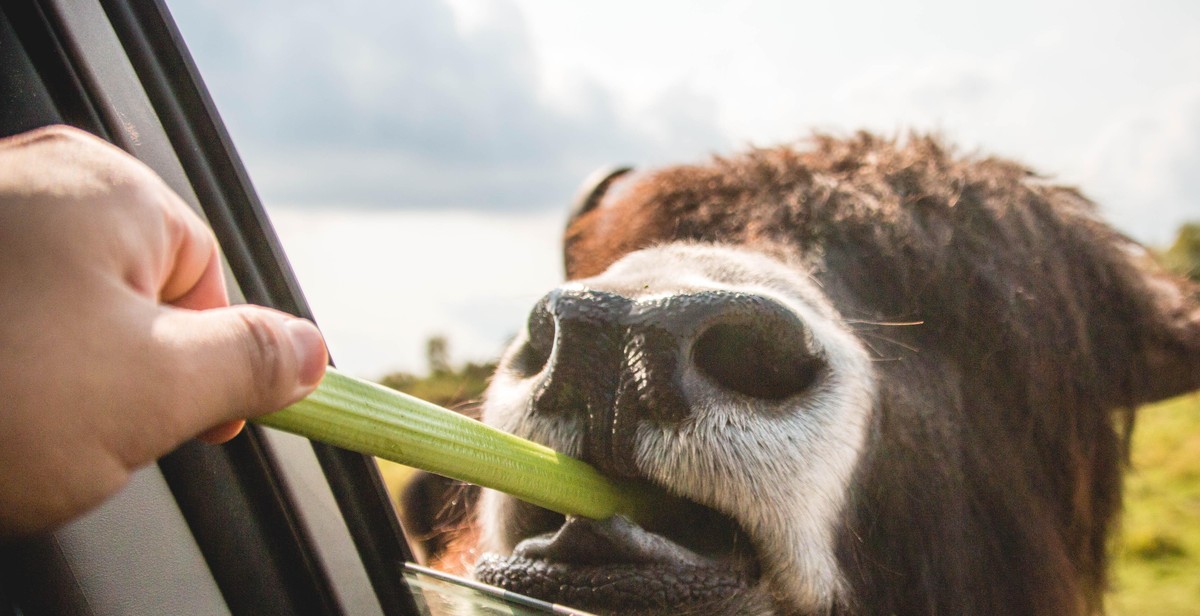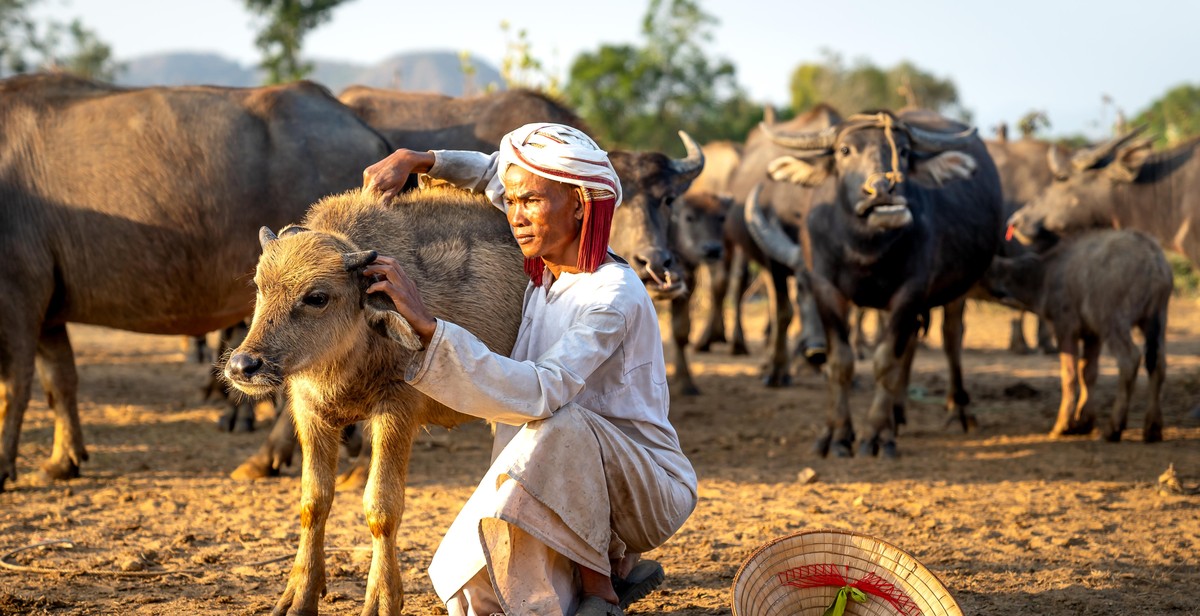How to Manage Buffalo Behavior: Understanding and Addressing Aggression and Social Dynamics
Buffalo are majestic creatures that have been a part of human civilization for thousands of years. They are revered for their strength, endurance, and resilience. However, they can also be unpredictable and aggressive, especially when they feel threatened or are in a social situation that they are not comfortable with. As a professional article writer and content creator, I have had the opportunity to work with buffalo and experienced firsthand their behavior and social dynamics.
In this article, I will provide insights and practical tips on how to manage buffalo behavior and address aggression. I will cover the different types of aggression that buffalo display, their social hierarchy, and how to establish yourself as a leader in their herd. I will also discuss the importance of understanding their body language and the signals they give off, and how to interpret and respond to them.
Whether you are a farmer, rancher, or wildlife enthusiast, understanding how to manage buffalo behavior is essential for their well-being and your safety. By following the advice and techniques outlined in this article, you will be equipped to handle any situation that may arise when working with buffalo.

Understanding Buffalo Behavior
Buffalo are social animals and thrive in herds. Their social dynamics are complex and require careful observation and management. Understanding buffalo behavior is crucial in addressing aggression and maintaining a healthy herd.
Social Dynamics
Buffalo herds are typically led by a dominant male, also known as a bull. The bull is responsible for protecting the herd and maintaining its social order. Bulls will often engage in shows of dominance, such as head-butting and posturing, to establish their position within the herd.
Female buffalo, also known as cows, play a crucial role in the social dynamics of the herd. They are responsible for rearing and protecting their young, and are often the primary caregivers within the herd. Cows will form close bonds with other females, and will often engage in mutual grooming to maintain social bonds.
Aggression
Buffalo are known for their aggressive behavior, particularly during mating season. Bulls will often engage in fights with other males to establish dominance and win the right to mate with the cows. These fights can be violent and may result in injury or death.
Aggression can also occur within the herd, particularly if a cow feels her young is threatened. Cows will fiercely defend their young and may become aggressive towards other members of the herd if they feel their offspring is in danger.
Addressing Aggression
Managing aggression in buffalo herds requires careful observation and intervention. It is important to identify the root cause of the aggression and address it accordingly. This may involve separating aggressive individuals from the herd, or implementing changes to the herd’s social dynamics to reduce tension and conflict.
When addressing aggression in buffalo herds, it is important to prioritize the safety of both the animals and their handlers. Aggressive buffalo should only be handled by experienced professionals who understand their behavior and can safely manage them.
| Key Takeaways: |
|---|
| – Buffalo are social animals led by a dominant male |
| – Aggression can occur during mating season or within the herd |
| – Addressing aggression requires careful observation and intervention |

Factors that Affect Buffalo Behavior
Buffalo behavior is influenced by various factors such as their habitat and food, predators, and human interference. Understanding these factors is crucial in managing their behavior and addressing aggression and social dynamics.
Habitat and Food
Buffalo are herbivores and their behavior is greatly influenced by the availability of food and water in their habitat. During the dry season, when resources are scarce, buffalo tend to be more aggressive and territorial as they compete for limited resources such as water and food. On the other hand, during the wet season when resources are abundant, buffalo tend to be more relaxed and social.
Furthermore, the type of vegetation in their habitat also affects their behavior. In areas with dense vegetation, buffalo tend to form smaller herds and are more aggressive towards other buffalo to protect their food source. In contrast, open grasslands provide more space for buffalo to graze and form larger herds, which can lead to more social behavior.
Predators
Predators such as lions and hyenas also affect buffalo behavior. Buffalo are known to be aggressive towards predators and will use their strength in numbers to defend themselves. When predators are present, buffalo will form tighter herds and become more alert and defensive. This can also lead to more aggressive behavior towards other buffalo in the herd.
Human Interference
Human interference is another factor that affects buffalo behavior. When buffalos are hunted or disturbed by humans, they can become more aggressive and unpredictable. This is particularly true for buffalo that have been habituated to human presence, as they may view humans as a threat and become defensive.
Human activities such as habitat destruction, poaching, and domestication can also affect buffalo behavior. For example, when buffalo are confined to small spaces, they can become stressed and aggressive towards each other and humans.
| Factors | How it Affects Buffalo Behavior |
|---|---|
| Habitat and Food | Influences their aggression and social behavior depending on the availability and type of vegetation, as well as water and food resources |
| Predators | Triggers defensive behavior, resulting in tighter herds and more aggression towards other buffalo |
| Human Interference | Can cause stress and unpredictability, leading to aggression towards humans and other buffalo |

Managing Buffalo Behavior
Buffalo are powerful and majestic animals that can be a joy to observe and interact with. However, they can also be unpredictable and potentially dangerous. To ensure the safety of both the buffalo and the people around them, it is important to understand and manage their behavior.
Prevention
The best way to manage buffalo behavior is to avoid situations that can lead to aggression. This means giving buffalo plenty of space and never approaching them too closely. If you are in an area where buffalo are known to roam, be sure to keep a safe distance and observe them from afar.
It is also important to be aware of the social dynamics of buffalo herds. Bulls can be particularly aggressive during mating season, so it is best to avoid getting too close to them during this time. Additionally, mothers with calves can be protective and territorial, so it is important to keep your distance if you come across them.
Addressing Aggression
Despite your best efforts to prevent aggression, there may be times when a buffalo becomes agitated or aggressive. In these situations, it is important to remain calm and avoid making sudden movements. Running or panicking can trigger an attack.
If a buffalo does charge, try to find a sturdy object to hide behind, such as a tree or large rock. If there is no cover available, try to make yourself as small as possible by crouching down and covering your head with your hands. Do not attempt to outrun a charging buffalo.
If you are in an area where buffalo are known to be aggressive, it is a good idea to carry bear spray or another form of deterrent. However, it is important to remember that these tools are not foolproof and should only be used as a last resort.
Conclusion
Managing buffalo behavior requires a combination of prevention and addressing aggression. By understanding the social dynamics of buffalo herds and giving them plenty of space, you can avoid situations that may lead to aggression. If a buffalo does become agitated, it is important to remain calm and take appropriate measures to protect yourself.

Conclusion
Managing buffalo behavior can be a challenging task, but with the right understanding and approach, it can be done effectively. It’s important to remember that buffalo are social animals and their behavior is influenced by their social dynamics, so it’s essential to consider their interactions with other members of their herd when addressing any aggression issues.
When dealing with aggressive buffalo, it’s crucial to remain calm and avoid any sudden movements or loud noises that could trigger an attack. Maintaining a safe distance and using deterrents such as whistles or pepper spray can also be effective in diffusing potentially dangerous situations.
Creating a suitable habitat for buffalo is also key to managing their behavior. Providing adequate space, food, and water sources can reduce stress and prevent conflicts among herd members.
Finally, it’s essential to work with experienced professionals who have a deep understanding of buffalo behavior and can provide valuable insights and guidance on how to manage these magnificent animals safely and effectively.
| Pros | Cons |
|---|---|
| Buffalo are social animals and their behavior is influenced by their social dynamics | Managing buffalo behavior can be a challenging task |
| Remaining calm and avoiding sudden movements or loud noises can be effective in diffusing potentially dangerous situations | Aggressive buffalo can be a threat to human safety |
| Creating a suitable habitat for buffalo can reduce stress and prevent conflicts among herd members | Working with experienced professionals can be costly |
Overall, managing buffalo behavior requires patience, knowledge, and a deep understanding of these magnificent animals. By taking a proactive approach and working with experienced professionals, it’s possible to create a safe and harmonious environment for both the animals and humans who share their habitat.
